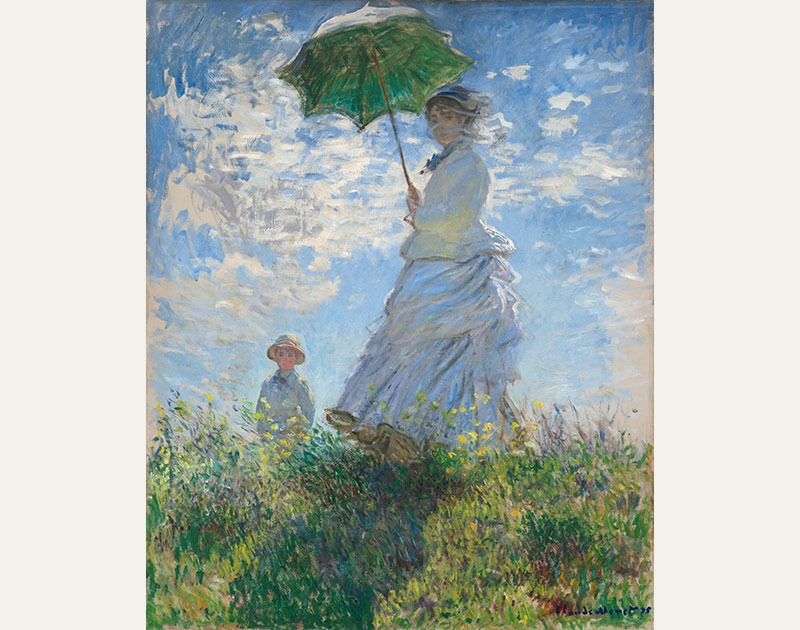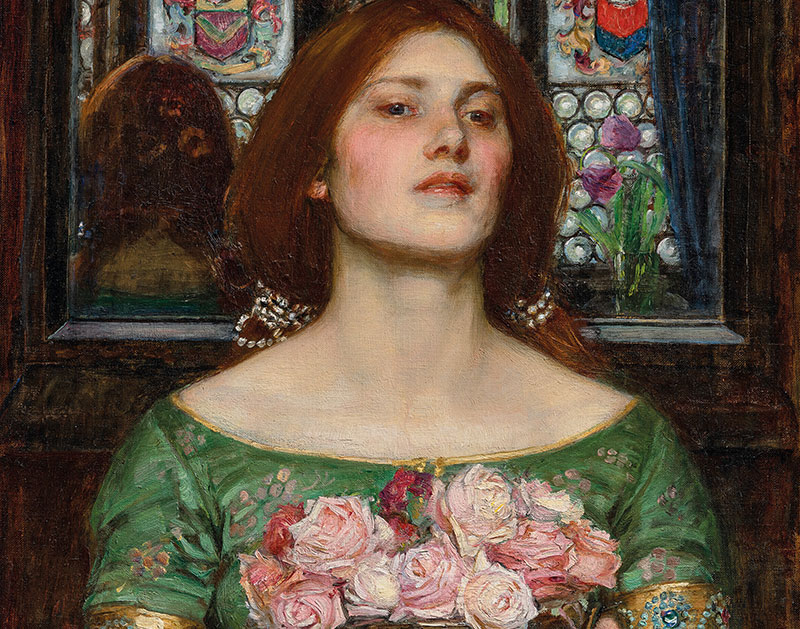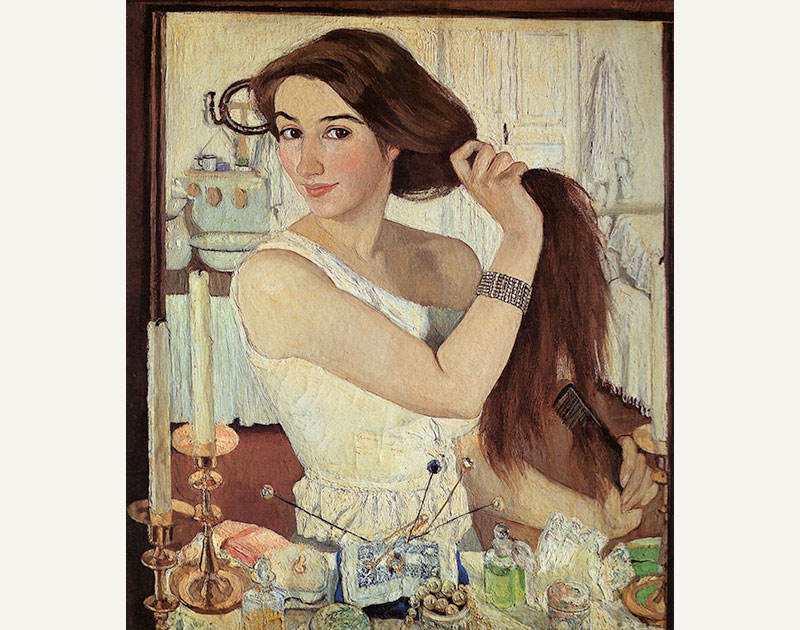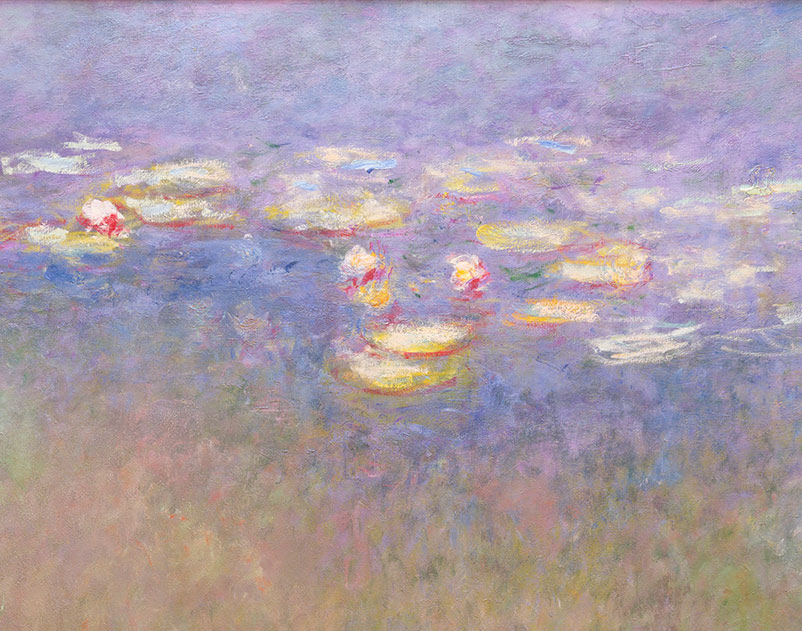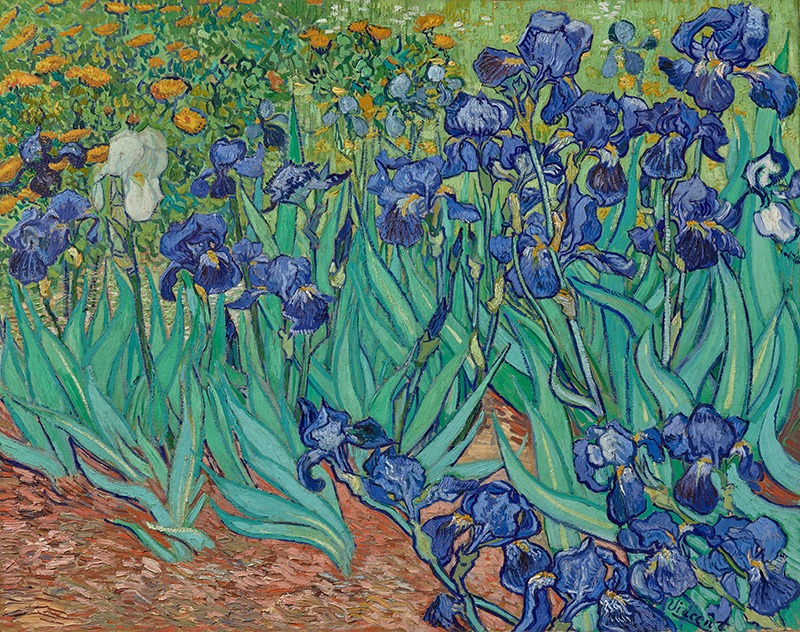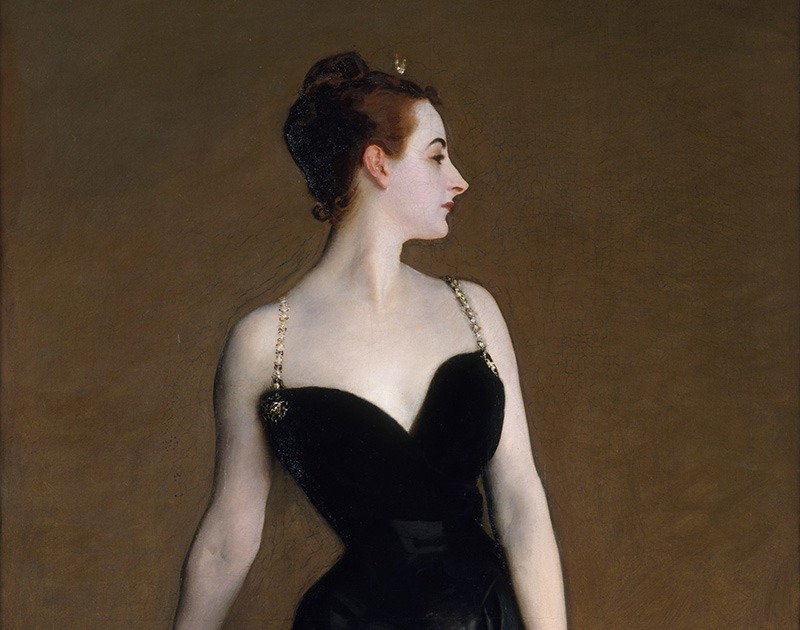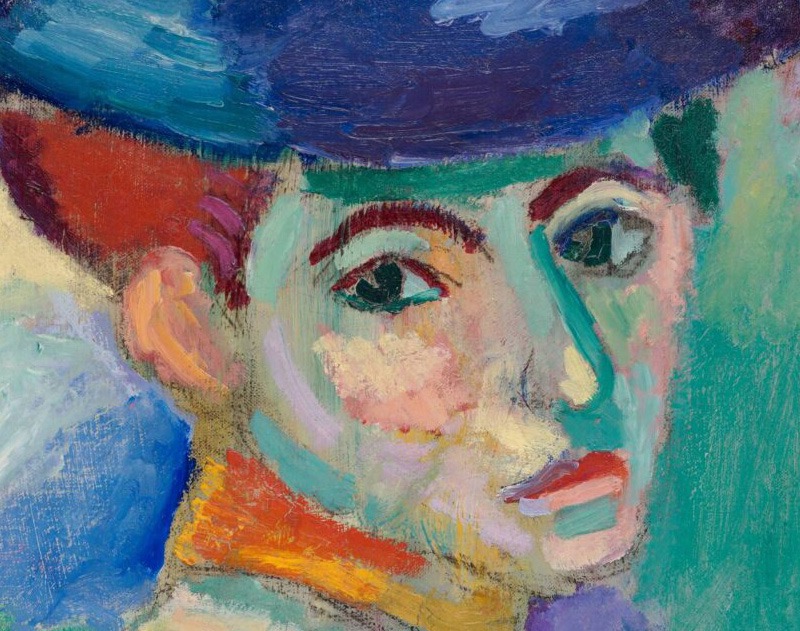This precious Tang Dynasty silk painting depicts a bodhisattva guiding a female devotee toward rebirth in the Pure Land. In the crimson clouds at the upper left, celestial palaces of the Western Paradise emerge. A cartouche at the upper right bears the inscription “引路菩萨” (“Guiding Bodhisattva”), identifying the central figure. While paintings of “Guiding Bodhisattvas” proliferated during the Tang, as evidenced by similar works from the Dunhuang Library Cave, this is the only known example with identifying inscriptions.
The bodhisattva, portrayed as a male figure with bare chest, holds a long-handled incense burner and a lotus stem bearing a hanging banner. His celestial robes and jeweled ornaments blaze with polychromatic splendor. The painting demonstrates consummate brushwork: precise yet fluid lines flow seamlessly, with no visible joins between strokes. By rendering the deceased woman behind him in diminutive scale, the artist enhances the bodhisattva’s divine majesty. The noblewoman’s opulent attire—flowing robes and intricate hairstyle—epitomizes High Tang aristocratic fashion. Though her identity remains unknown, she likely represents elite female Buddhist patrons of her era.
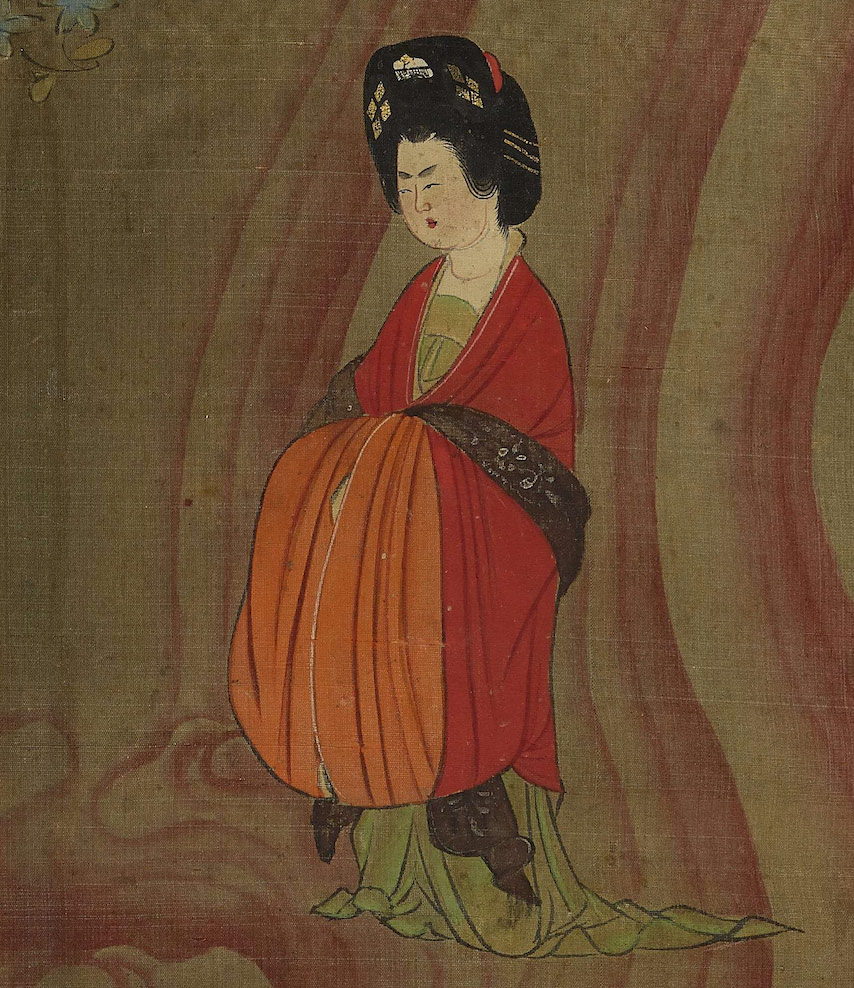
The painting’s chromatic brilliance remains remarkably preserved. Gold leaf adorns every sacred element—from the incense burner and bodhisattva’s crown to the diamond-shaped gold flakes scattered in the noblewoman’s hair. Her sumptuous silks and meticulously painted cosmetic details (arch-shaped brows, vermilion lips) suggest royal status—perhaps a princess or high-ranking consort. Yet despite earthly glory, she follows the bodhisattva with humble reverence, her clasped hands and downward gaze embodying the Tang elite’s pursuit of spiritual liberation beyond mortal splendor.

